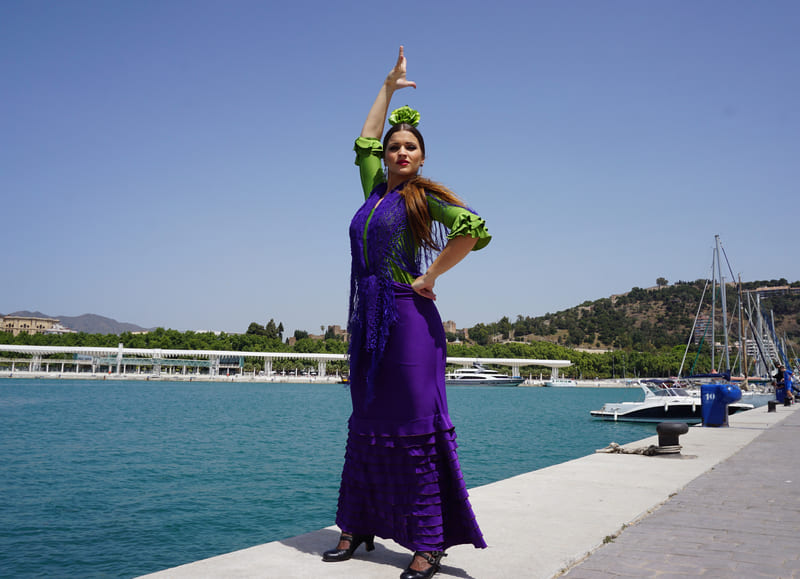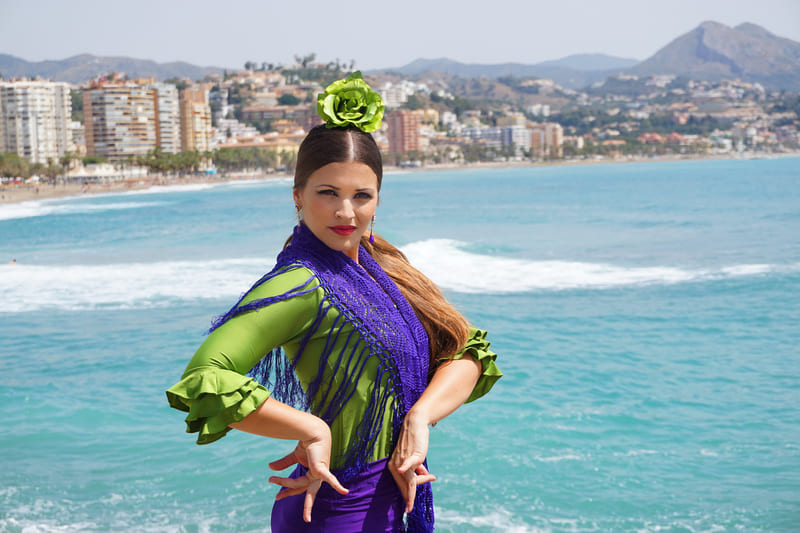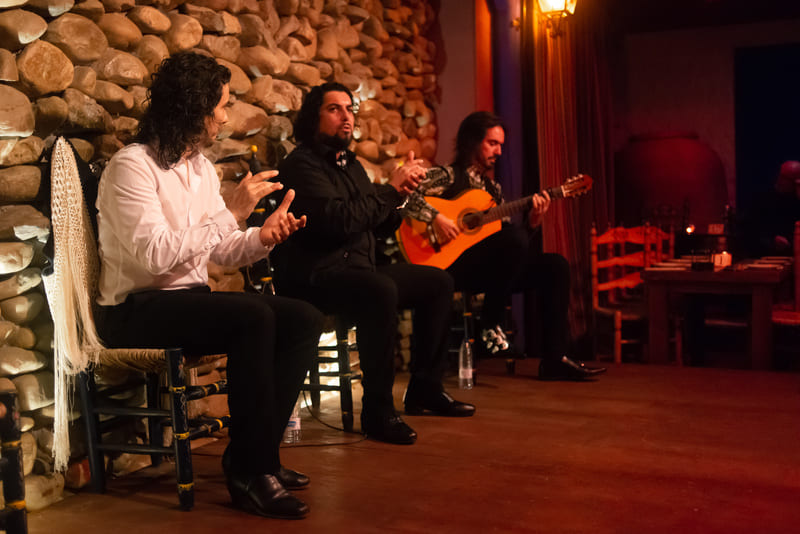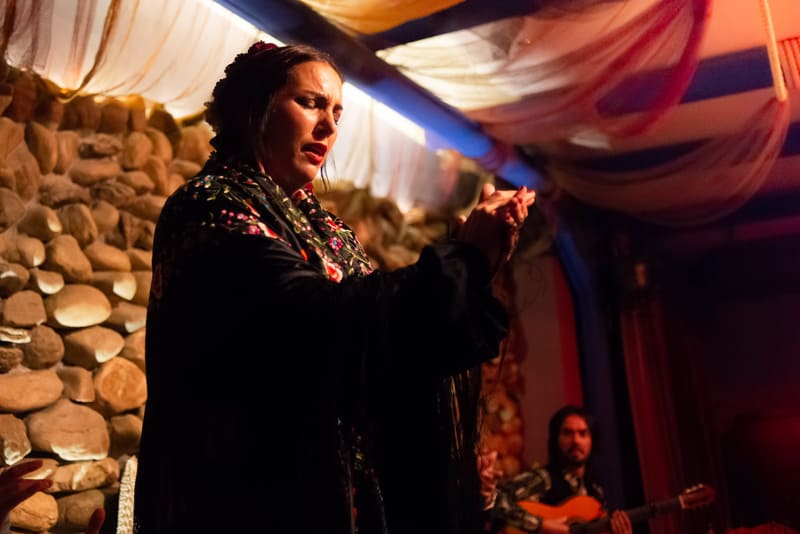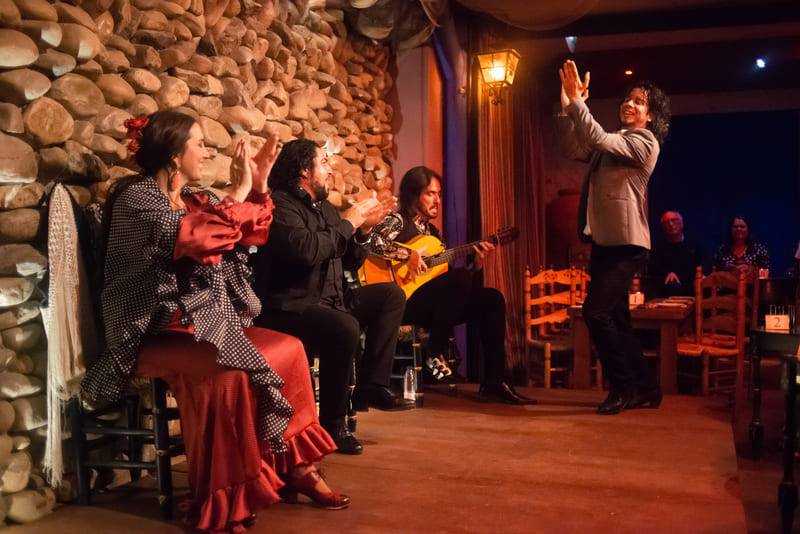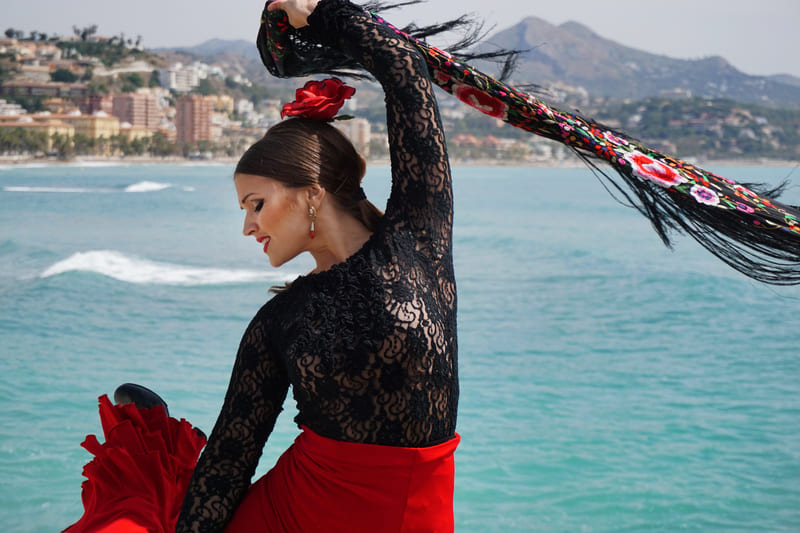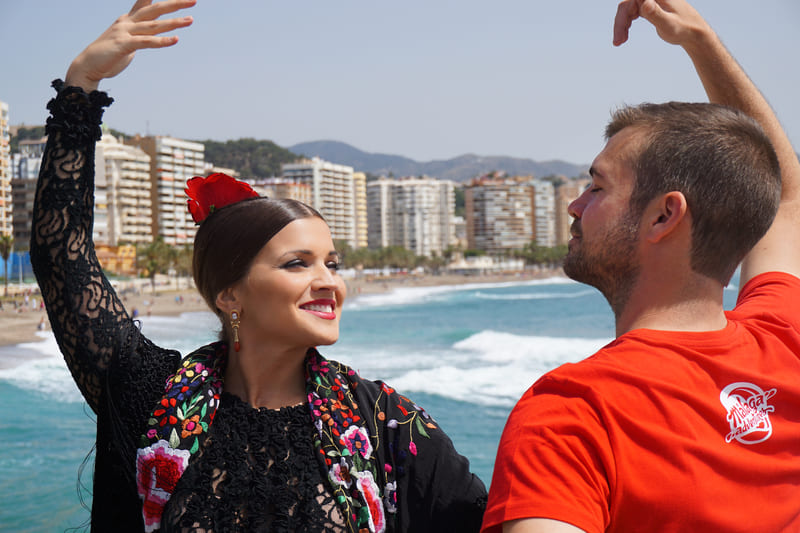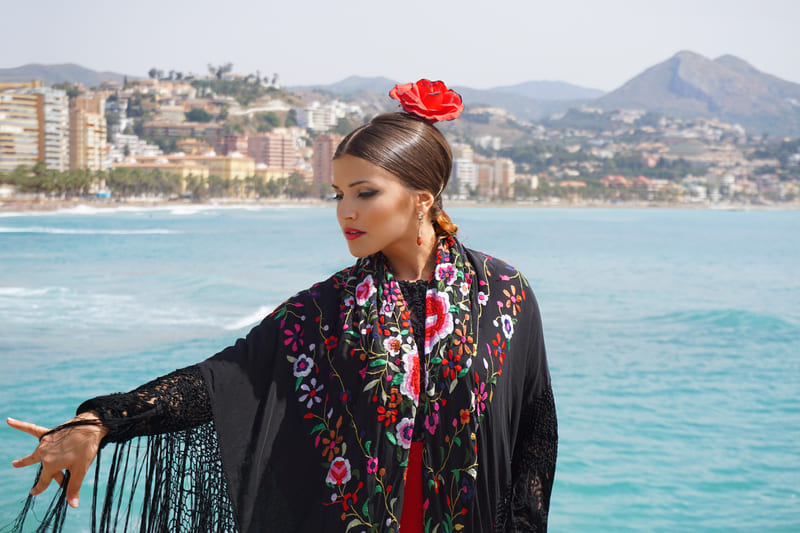Flamenco Dance – All you need to know
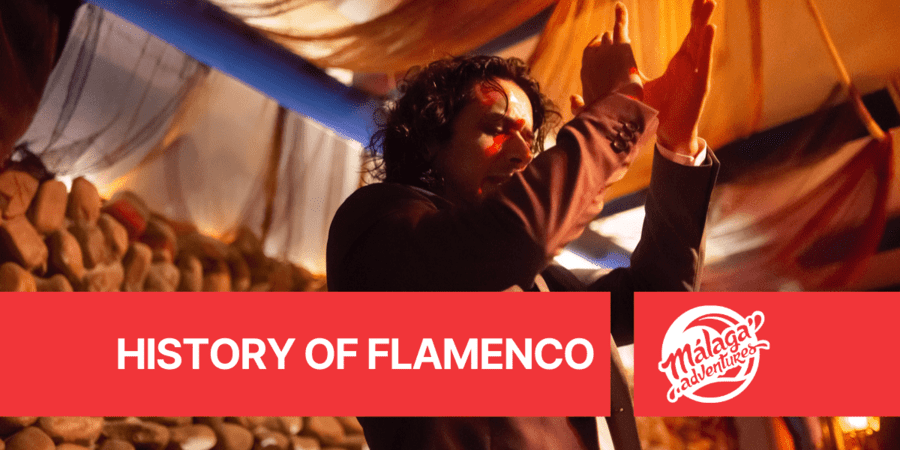
When thinking about the cultural heritage of Spain, what is the first thing that comes to your mind? Is it flamenco? For me, it is. The music. The dance. The passion. Everything about flamenco encompasses Spanish culture.
But how did it appear? What does it mean? How did it become so popular? And why is it so important?
In this blog, we will answer all these questions and many more that you might have about flamenco dance and its music.
Indice de la Entrada
What is flamenco?
Flamenco is without any doubts one of the pillars of the Spanish culture, especially of the Andalusian one where its origins going back.
Although many would say that flamenco is a dance, it is so much more than that. It is a multicultural art expressed through the combination of music, singing, dancing, and particular rhythmic punctuation (for example, hand claps or shoe clacks).
Many sources refer to flamenco as a folk art, and if you’ve ever seen a flamenco show you would definitely agree with this definition.
This artistic and cultural expression has such a strong impact that in 2010 UNESCO declared flamenco “Intangible Cultural Heritage of Humanity”.
How many cultures influence flamenco?
As we have said, flamenco is a multicultural art. It is for sure deeply related to the gipsy culture but it is a synthesis of many more cultures; it involves also the Andalusian, the Jews, the Muslim and the African one.
Each component of this artistic expression comes from one of them; the rhythmicity is probably Moorish, the temperament and illustrative claw are Gypsy, the grace is Andalusian, and the shakes and passion are African.
At the beginning, flamenco was mainly singing; Moorish sounds, African rhythm, Jews songs and Andalusian popular songs. As time went by, also the dance and the use of the Spanish guitar became more and more important.
This cultural melting pot has been a direct consequence of the various cultural panorama that has always characterized Andalusia. However, researchers are still trying to understand exactly how many cultures have had an input in the making of flamenco.
When flamenco started?
The origin of flamenco is shrouded in mystery; being an art originally expressed by poor and oppressed, it was mainly orally transmitted. For this reason, it is difficult to have 100% reliable data.
Even about the name flamenco there is no certain information; there is a theory that says that the name comes from a particular Andalusian phrase: “fellah min gueir ard”, which means “peasant without land”.
Some believe that it originated in an Arab neighbourhood, others say a Christian neighbourhood, and others say it was perfected in a Gypsy neighbourhood… it is complicated to keep track of all the versions.
So, it comes to no surprise as to why flamenco is so hard to pinpoint in history.
Regarding to when flamenco originated, the first reports are of the XVIII century, but it can’t be ruled out that it can be so much older than that, around the XV – XVI century.
When flamenco became a legend?
At this point of our post, we can wonder how did flamenco become so popular? Wasn’t it only practiced by the poor?
It is true that for centuries flamenco was practiced by outcasts. However, its beauty could not remain unnoticed forever. Starting from 1765- 1860, the first schools of flamenco started appearing in the cities of Andalusia: Cadiz, Jerez de la Frontera and Seville.
Moreover, from the second half of the 19th century flamenco artists started to perform in the different “café cantante” (literally singing cafes) of Seville. These places where locals open at night where people could take a drink while enjoying some musical performances including flamenco. It was in the cafes that also the role of the guitar became so important and appreciated, making all the performance unique.
People liked it so much that more and more cafés cantantes started appearing all around. By the 20th century, it became a phenomenon also with the first appearances in the theatres.
Why is flamenco performed?
Flamenco is an art form used for expressing different kind of feelings. The lyrics of the flamenco songs can express love, passion, sadness, pain and so much more; it is almost impossible to assist to a performance similar to another.
We can affirm without any doubts that flamenco is a language, an artistic expression able to strike at anyone’s soul.
Moreover, as we have already said, during a flamenco show, you will for sure notice its three basic components: music, dance and rhythmic punctuation expressed by guitarists, singers and dancers.
Dancers use castanets, high-heel shoes, claps and specific toe and heel clicking to add panache and flair to the dance. Depending on the subgenre of the flamenco, the rhythm is different. Additionally, all the shows is made even more scenic by beautiful flamenco dresses.
We can assure you that, when you assist to a flamenco show, you can feel the strong emotional charge that makes flamenco so special.
Where can I see a flamenco show?
If you’re travelling all around Andalusia, you can go to any city and enjoy a flamenco show.
For example, if you are looking for a flamenco show to see in Seville, in addition to specific locals, you can walk around Plaza de España and find some dancers and guitar players performing amazing live shows.
Granada, one of the most important cradles of flamenco, host in the neighborhood of Sacromonte some flamenco shows where it is possible to feel the deep soul of this amazing dance.
Regarding to Malaga, even if the city is not very famous for the flamenco as Seville or Granada, you can find some amazing tablaos; Cal y Canto is one of our favourite dedicated to this performance where you can enjoy also a delicious dinner.
Moreover, if you want to have a full overview of the city, including also a flamenco performance, we can recommend you our special private tour. You can explore the beauty of Malaga, its culture, its delicious gastronomy and you will end the day with an amazing flamenco show for a very convenient price!
With this blog post about flamenco, we hope to answer all you question and curiosities about this amazing and powerful artform.
Whenever you will visit Andalusia, we recommend you to assist to a flamenco show, and if you like it, let us know leaving a comment!
Read also
- alcazaba tour (2)
- free tour (1)
- header picture (1)
- iconos (11)
- Posts solo en español (22)
- Team (14)
- Uncategorized (1,132)
